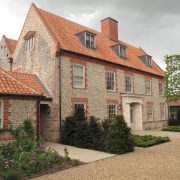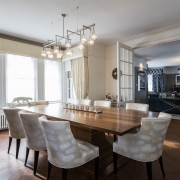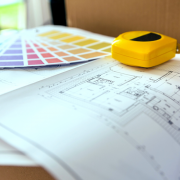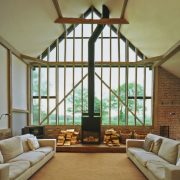13 things you can do without planning permission
“Do I need planning permission for this?” One of the common questions we’re asked by homeowners. This article lists 13 projects you can undertake without needing approval from the planners.
If you want to build a huge extension or knock down a rebuild, then you will need planning permission before you can begin. But there are many smaller improvements that you might be surprised to learn can be done without permission from your local authority. Projects such as converting your garage, adding a conservatory or changing classing can all be completed with Permitted Development (PD).
There are limitations to these rights, especially if you live in a designated area or a listed building, or if you have already made considerable alterations to your home. It’s best to check before starting any work to avoid issues.
When do I need planning permission?
If you’re altering a listed building, planning a large extension or building from scratch, you will need planning permission. Our complete guide to planning permission will take you through the process.
Listed below are smaller home improvements that you’re likely to be able to complete under Permitted Development.
1. Internal remodelling
Remodelling the interior is a good way to add more space to your home and can often be done within PD. While you don’t need planning permission, you will need the approval of Building Regulations on structural elements and electrical works.
2. Converting a garage
Converting an attached building, such as an integral garage, into living space falls under PD as you are not increasing the overall footprint of the building. If you’re converting a standalone garage, you will need to apply for a change of use under Building Regulations.
3. Converting a loft
Additional space can also be achieved through a loft conversion, without the need for planning permission. There are limitations on the cubic content allowed under PD, but generally up to 40m³ is fine.
PD also allows for the construction of dormer windows, for additional headroom. But they must not extend forward of the roof plane on the principle elevation, or sit higher than the highest part of the existing roof.
4. A single-storey extension
If you stay with the below parameters, you can build a single-story extension without planning consent:
- Materials should be similar
- The extension does not sit forward of the principle elevation
- The eaves cannot be higher than 3m where it is within 2m of any boundary
- Rear extensions – no more than 4m in depth (detached house) or 3m in depth (semi-detached or terrace house)
- Side extensions – the width must not be greater than half the width of the original dwelling
5. A two-storey extension
Under PD, you can add a two-storey extension to your home, as long as it is at the rear of the dwelling. In addition, it must not exceed 3m in depth or be within 7m of the rear boundary.
6. Adding a conservatory
Similar to single storey extensions, conservatories and orangeries can be added under PD, following the same restrictions.
7. Adding a shed or outbuilding
Providing the total area covered by multiple outbuildings does not exceed 50% of the total area of the curtilage, these may be built under PD. This 50% should take into account any extensions, but not the area covered by the main house. Here are some restrictions:
- Outbuildings cannot sit forward of the principle elevation
- Outbuildings can only be single storey, with the maximum eaves height remaining at 2.5m
- There are height restrictions depending on the type of roof
- Outbuildings under PD cannot be used for residential accommodation, but can be used to work from home
8. Adding a porch
As long as your new porch conforms with the below criteria, you don’t need planning permission:
- The ground area does not exceed 3m² (measured externally)
- No part of the porch can be taller than 3m
- It cannot be within 2m of any boundary adjacent to a highway
9. Building a swimming pool
With Permitted Development you can build a swimming pool within your garden, provided that the total area covered by the pool does not exceed 50% of the area of the garden curtilage.
10. Changing/adding cladding
Cladding (render, timber, stone, etc.) changes may fall under PD, but is not permitted under PD on any dwelling house located on Article 1(5) land which includes special areas such as a National Park, AONB, World Heritage Site or Conservation Area.
11. Adding solar panels
Solar panels can be added under PD. Just ensure they do not protrude more than 200mm beyond the place of the wall or roof, and the highest part of the panel isn’t higher than the highest part of the roof (excluding chimney).
Free-standing panels can also be developed, but are limited in size.
12. Adding a basement
It was recently decided that basements could be PD under Class A of the General Permitted Development Order (GPDO). However, PD does not allow for engineering works.
13. Creating parking spaces
Parking areas are permitted under PD providing that:
- Any hard surface situated between the principle elevation of a dwelling and the highway, or any surface which exceeds 5m², is made of porous materials
- Provisions are made to direct run-off water from the surface within the property curtilage and not onto the highway














Leave a Reply
Want to join the discussion?Feel free to contribute!